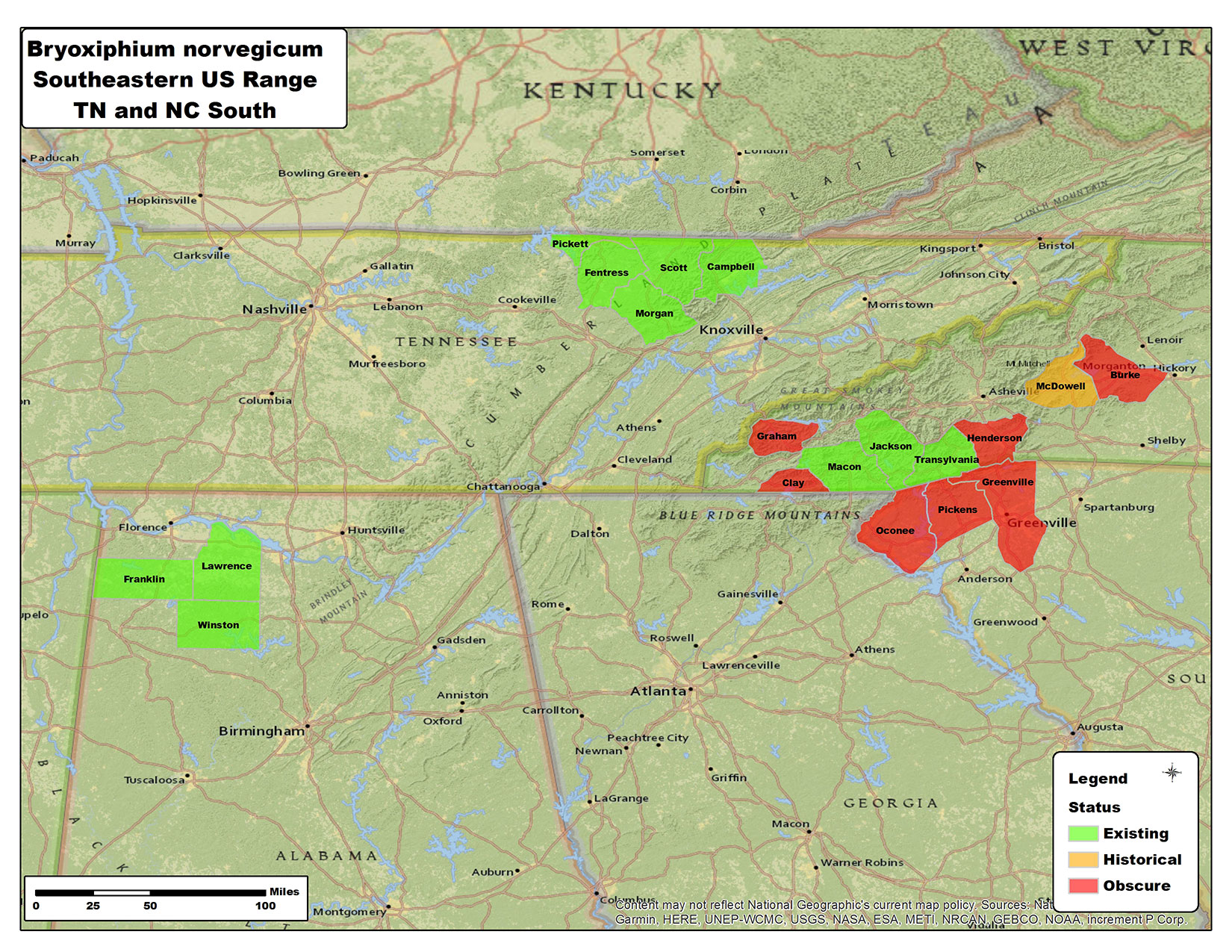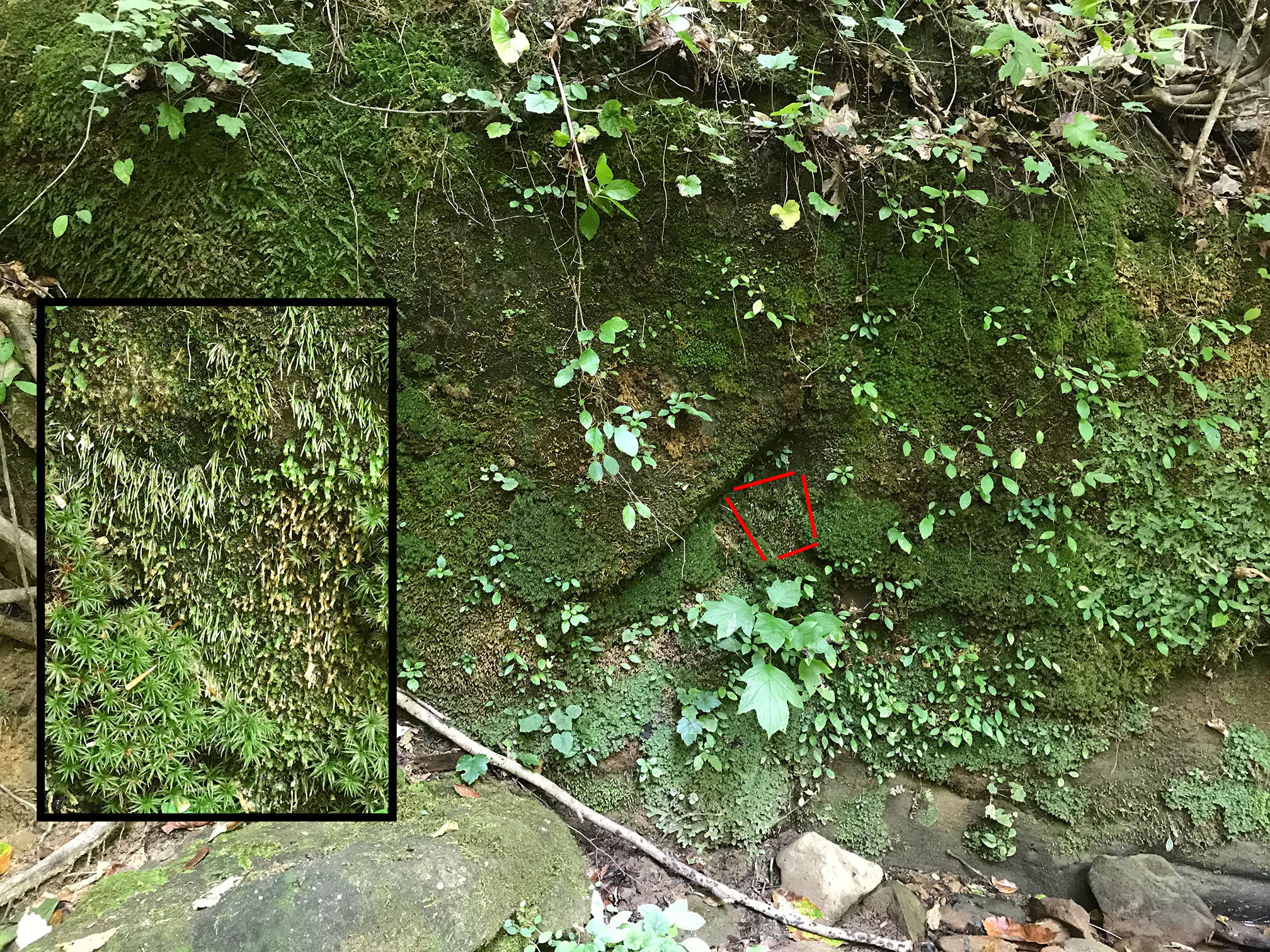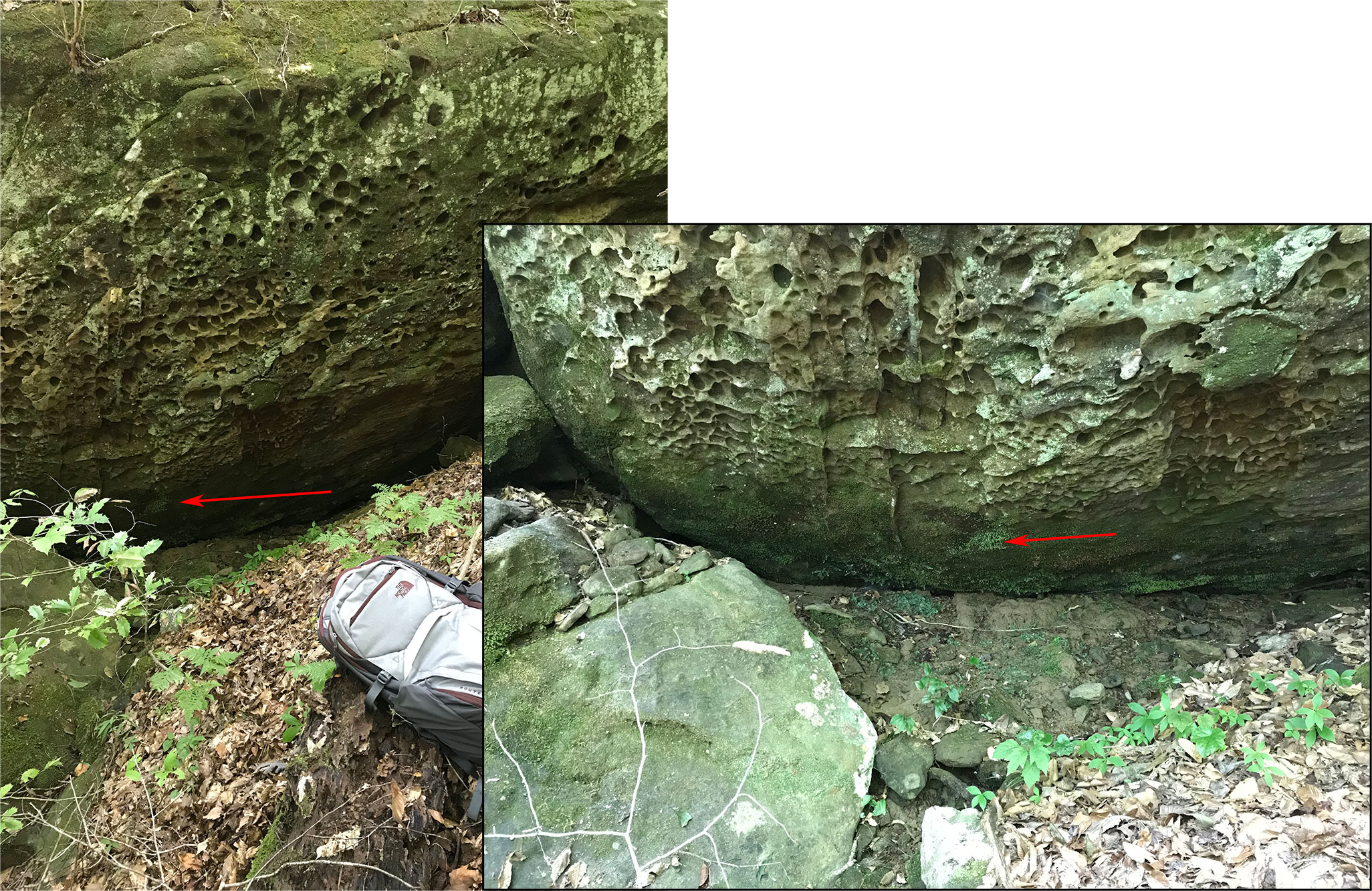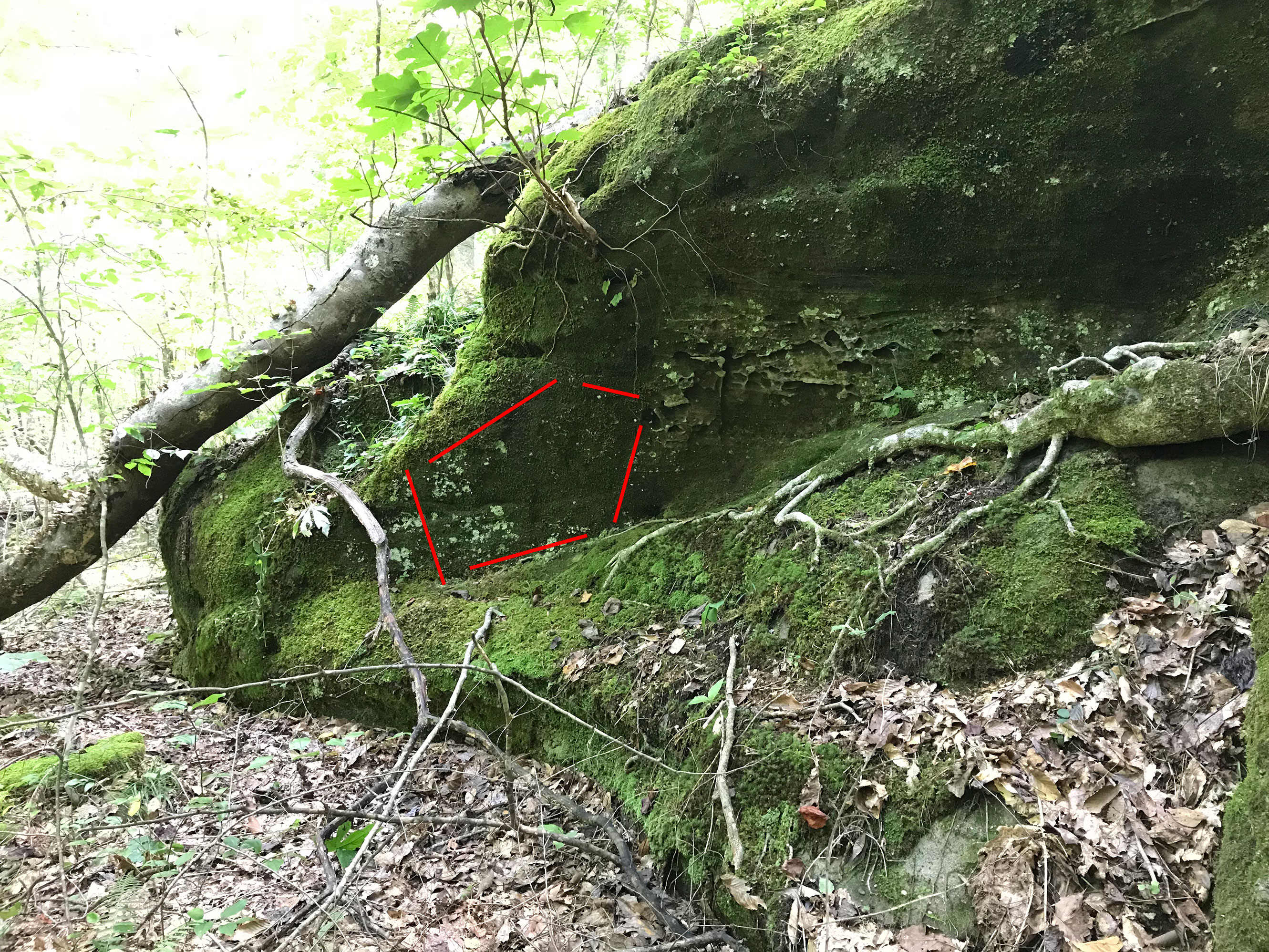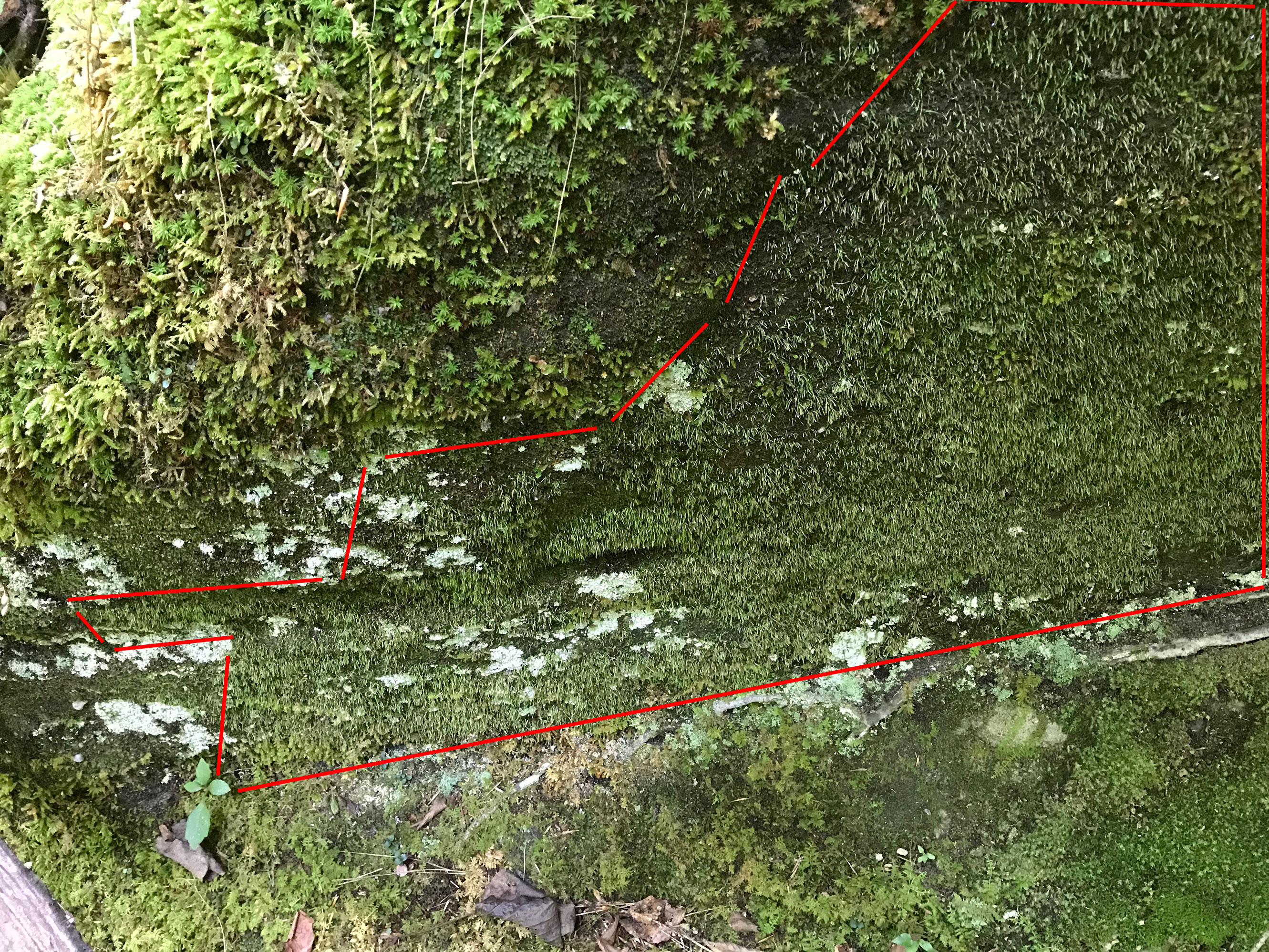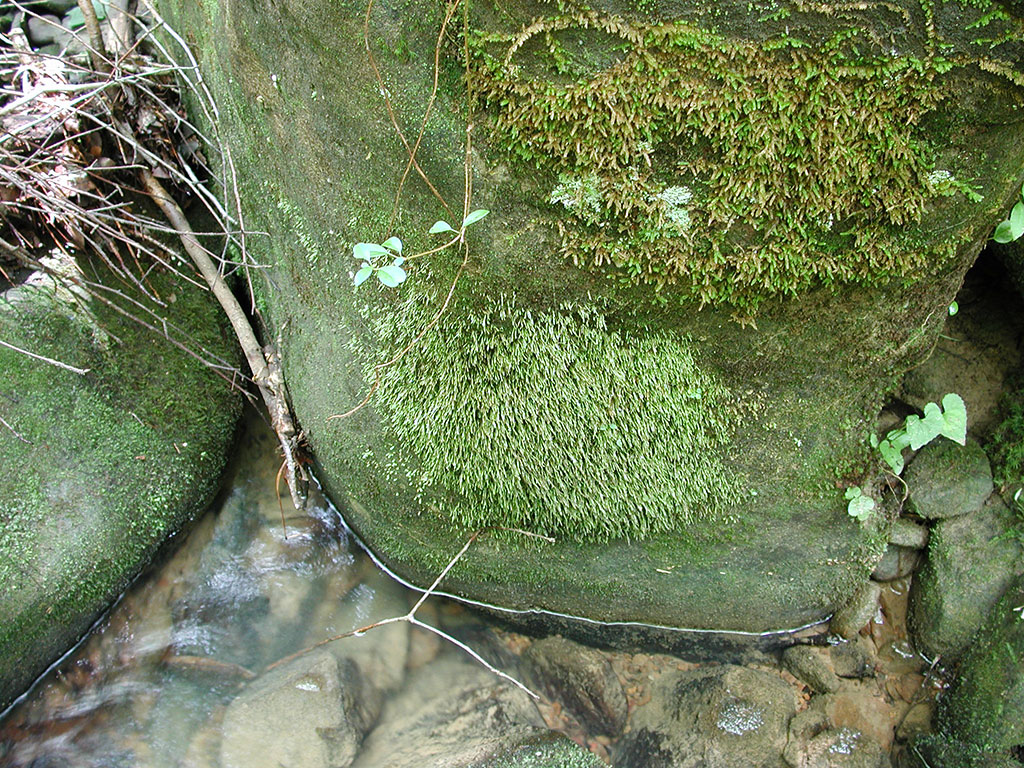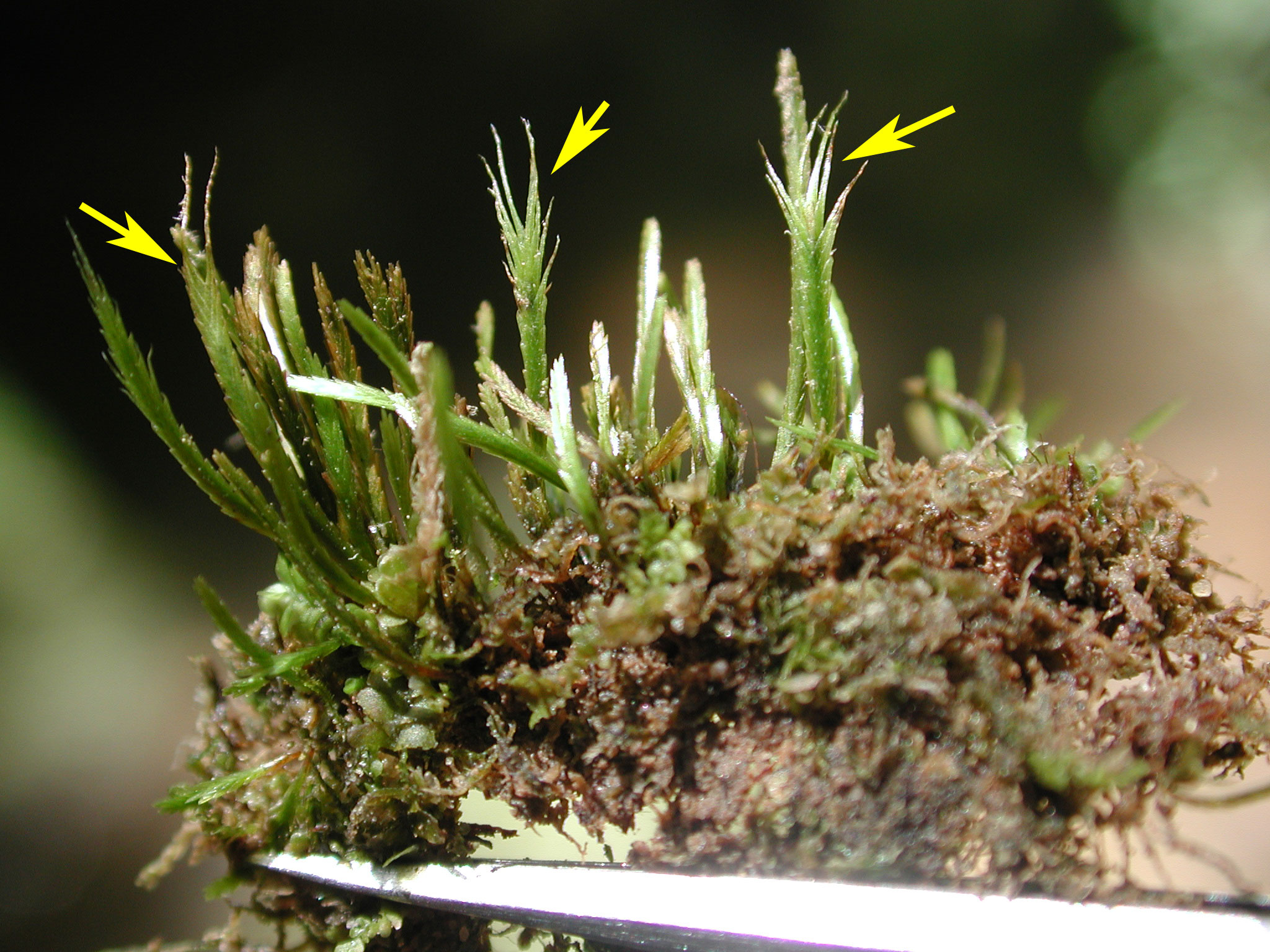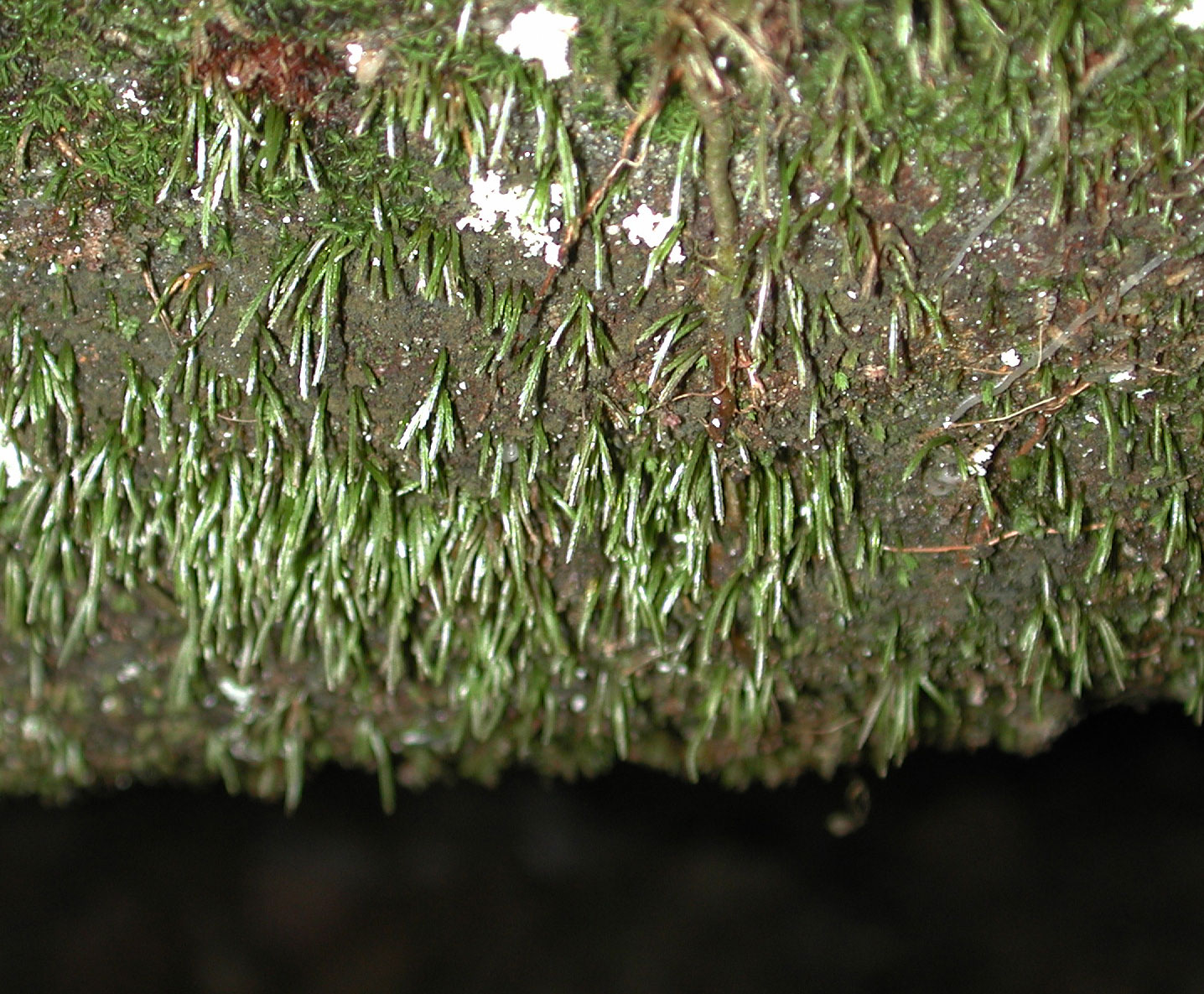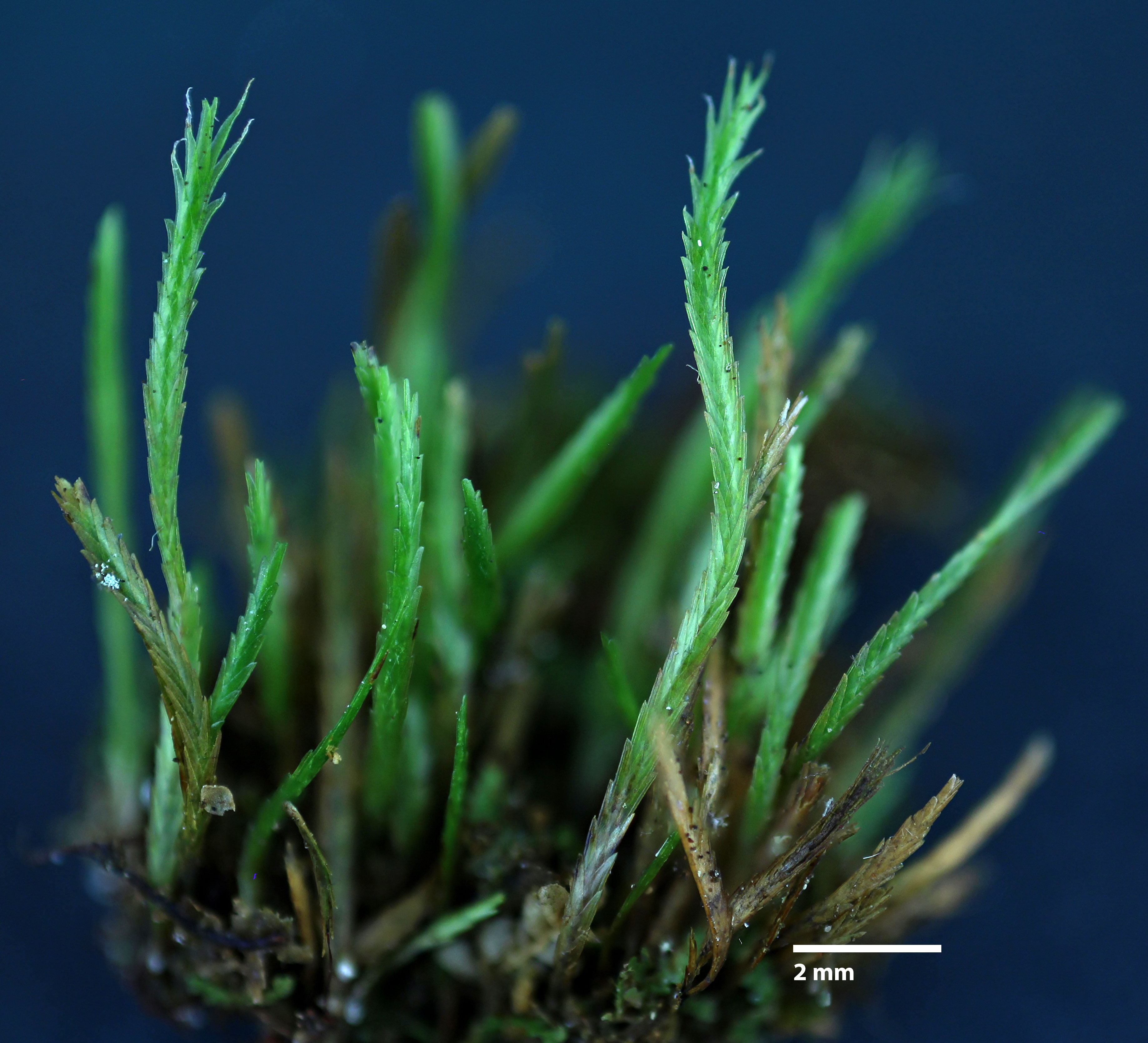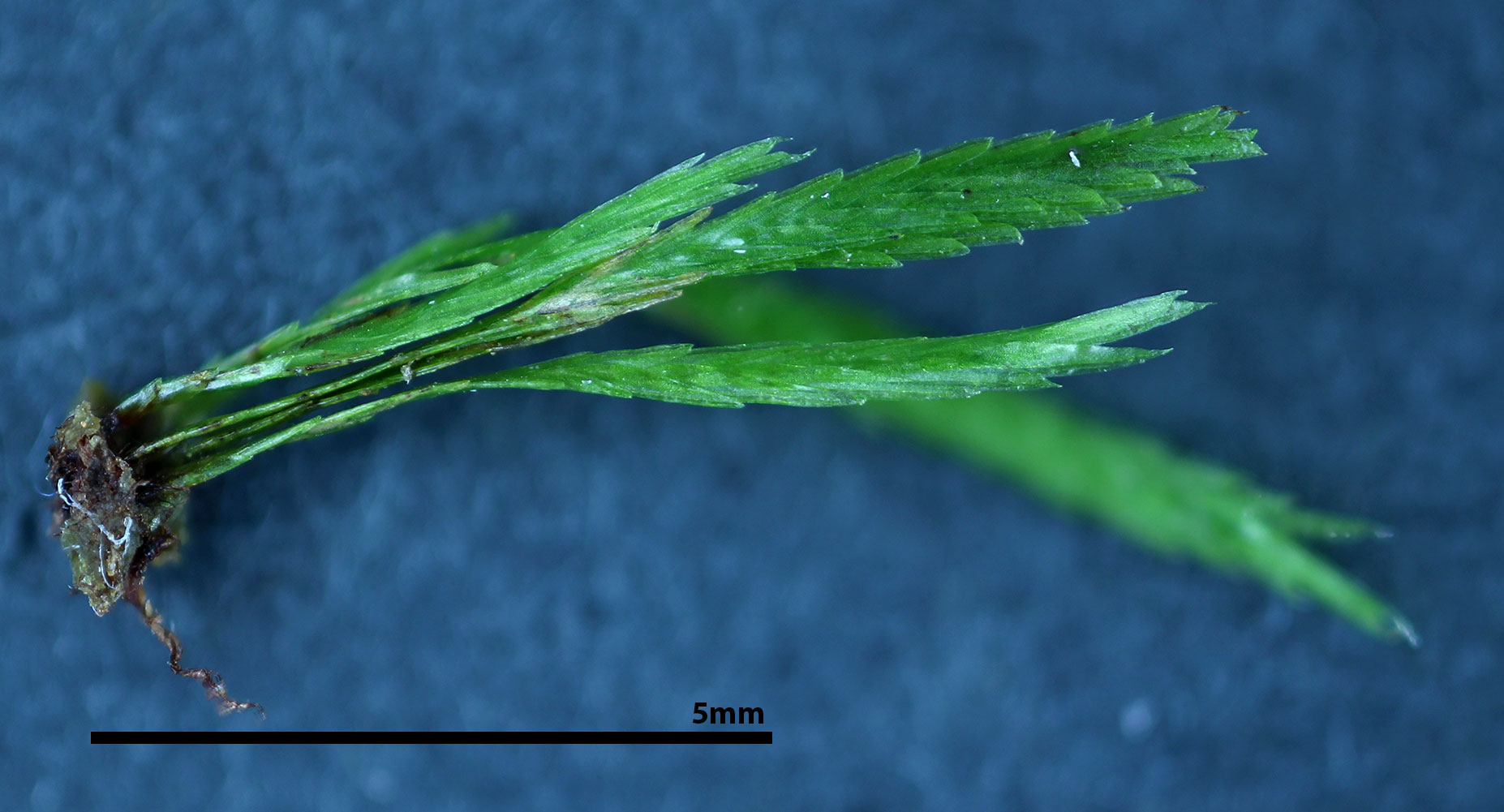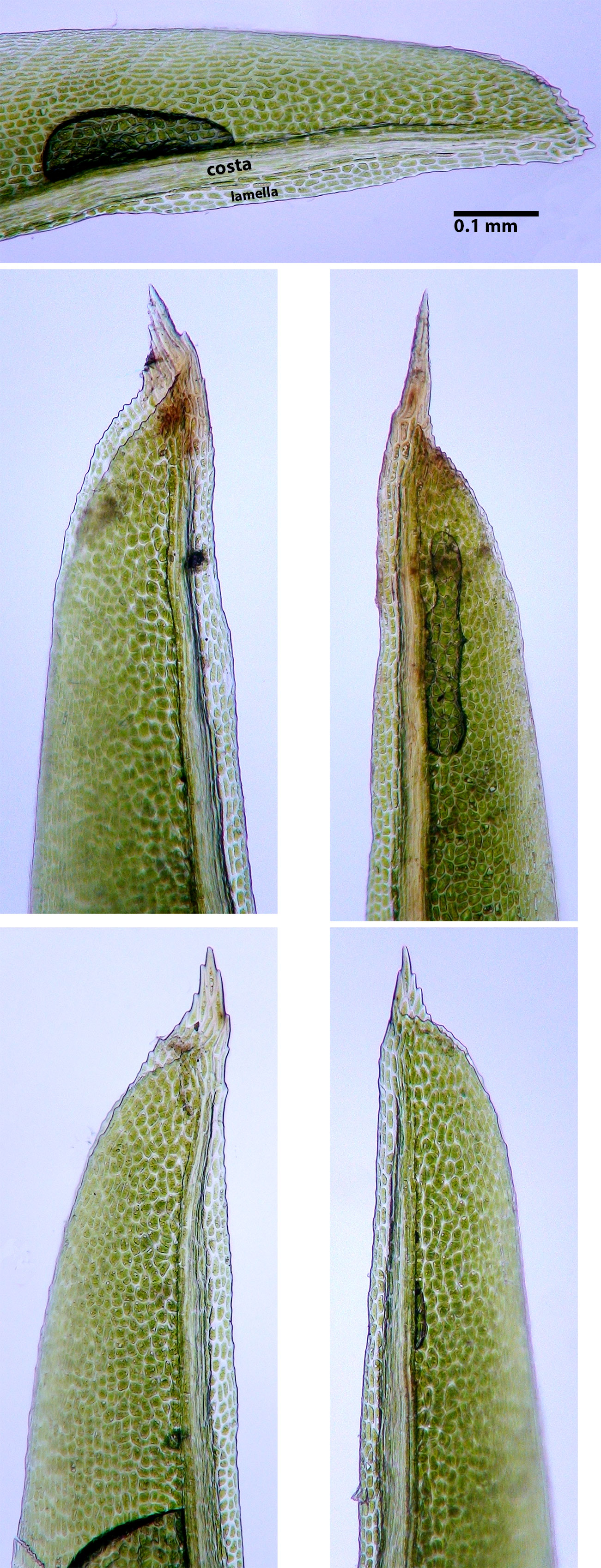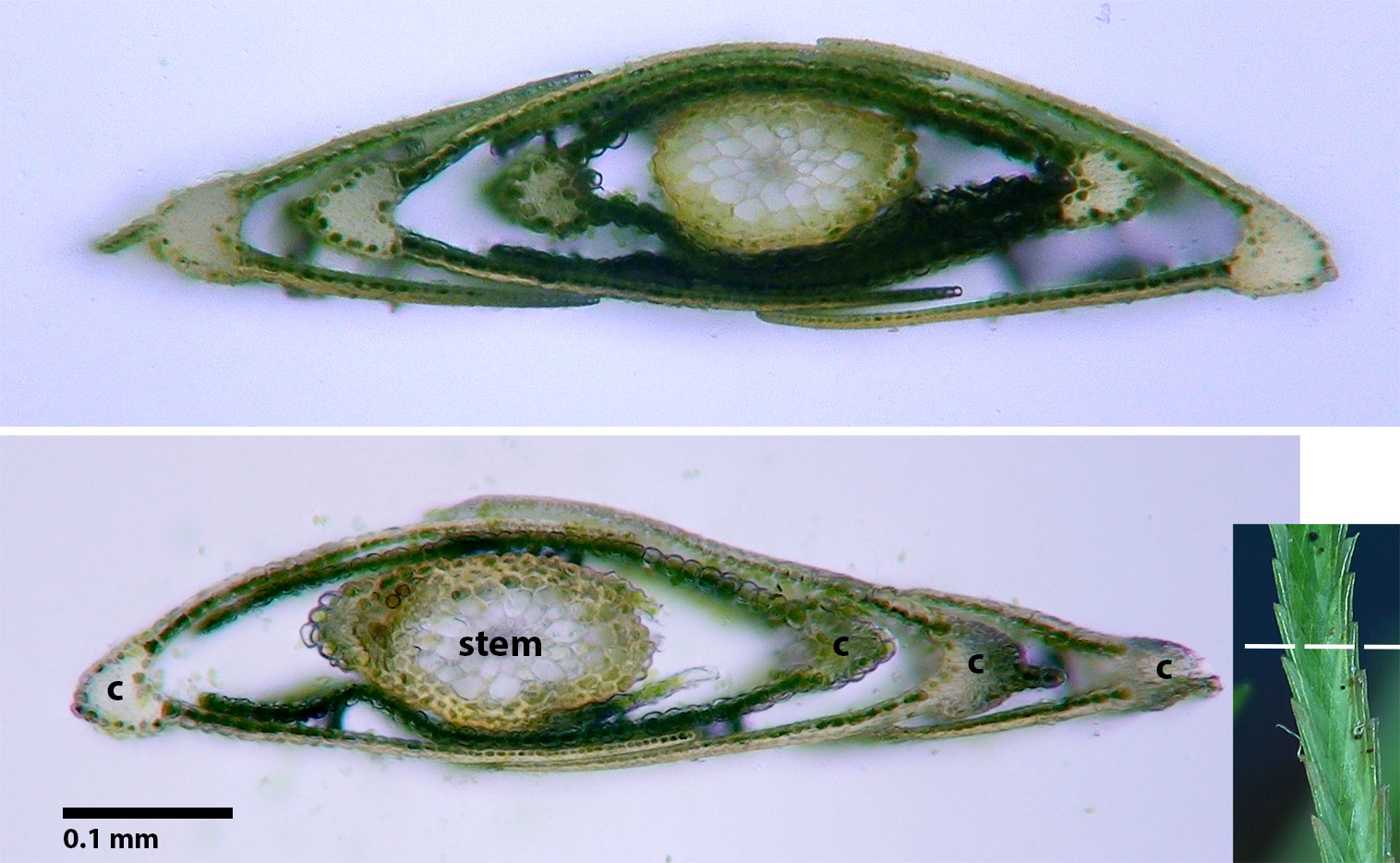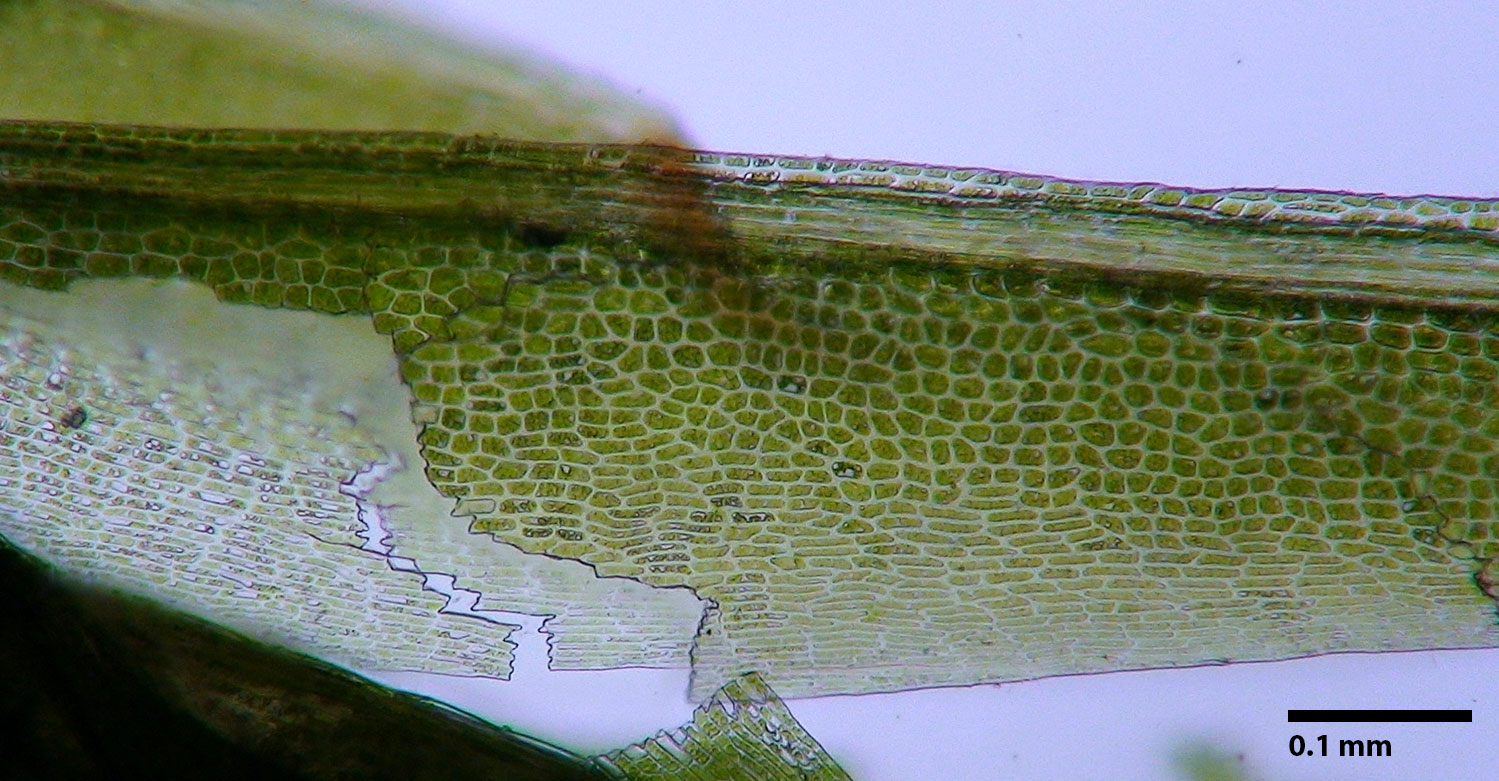Bryoxiphium norvegicum (Bridel) Mitten subsp. norvegicum
Family: Bryoxiphiaceae
Synonyms
none recent
NatureServe Conservation Status
G5?
Distribution
North America. U.S.A. Across the U.S. from Alaska to Alabama, known from 15 States (Hill 2002). Extirpated in Colorado (Hill 2002). East of the Mississippi River from Tennessee southward: Alabama, North Carolina, Tennessee; according to Löve and Löve (1953) also in South Carolina. The Flora of North America treatment (Pursell 2007) does not include Alabama in the state distribution list, yet the species has long been known to occur there (Harvill 1949; Crum and Anderson 1981). East Asia. Mauritius. Iceland. Patiño et al. 2016.
Two subspecies of Bryoxiphium norvegicum are recognized: subsp. norvegicum, and subsp. japonicum, the latter distributed in East Asia (Patiño et al. 2016).
Habitat
In the the southeastern U.S. occuring in stream ravines on moist, shaded rock, commonly sandstone, where the rock surface is protected and sheltered from direct rainfall. This includes vertical surfaces and sheltered ledges and especially backwalls and sloping ceilings of rockhouses and smaller outcroppings. Rocks supporting Bryoxiphium overhang streams or may be a hundred or more feet from running water. The microhabitat is in constant high humidity but never dripping wet from direct rainfall or from the direct spray of waterfalls. In the southeastern U.S. known populations occur below 4000 ft in elevation.
Brief Description and Tips for Identification
Among mosses, Bryoxiphium is quite distinctive and easily identified. Shoots are unbranched, 0.4-3 cm long and perennial; stiffly projecting from the substrate, few and scattered or more commonly found in dense, large aggregations approaching 1 square meter (usually less) of contiguous cover. Shoots do indeed resemble a sword, hence the well established common name sword moss. Shoots are typically shiny, narrow and parallel sided, flattened throughout yet thinning to the margins reminiscent of a sword's cutting edge. Leaves are folded in half along their long axis (conduplicate) such that the costa forms the keel. Projecting from the back of the costa is a low, several cells high lamella of photosynthetic cells that dissappears before the reaching the leaf base.
Dioicous. In the southeastern U.S. only females are known. Given the apparent lack of regional spore production and lack of specialized asexual reproduction, regional populations have likely persisted in place for the last century and are likely far, far older. The scattered populations of Bryoxiphium throughout most of North America are thought to be the remnants of a more contiguous distribution across the Northern Hemisphere dating back to 10 million years ago (Patiño et al. 2016).
Salient Features
- Shoots elongated and flattened, rather rigid and parallel sided, thinning towards the lateral margins
- Leaves strictly 2-ranked
- Leaves tightly imbricate, each leaf folded in half lenthwise, partly surrounding the next leaf above
- Leaves costate, the costa forms the keel of the folded leaf
- A lamella several cells high projects from the back of the costa
References
Crum, H. A., and L. E. Anderson.(1981). Mosses of Eastern North America (Vol. 1). Columbia University Press
Harvill, A. M. (1949). Bryoxiphium in Alabama. The Bryologist, 52:137-139
Löve, A., and D. Löve. 1953. Studies on Bryoxiphium. The Bryologist 56: 183-203
Patiño, Jairo, Bernard Goffinet, Manuela Sim-Sim, and Alain Vanderpoorten. 2016. Is the sword moss (Bryoxiphium) a preglacial Tertiary relict? Molecular Phylogenetics and Evolution 96: 200-206.
Pursell, R. A. 2007. Bryoxiphiaceae. In: Flora of North America, North of Mexico 27: 329–330.
